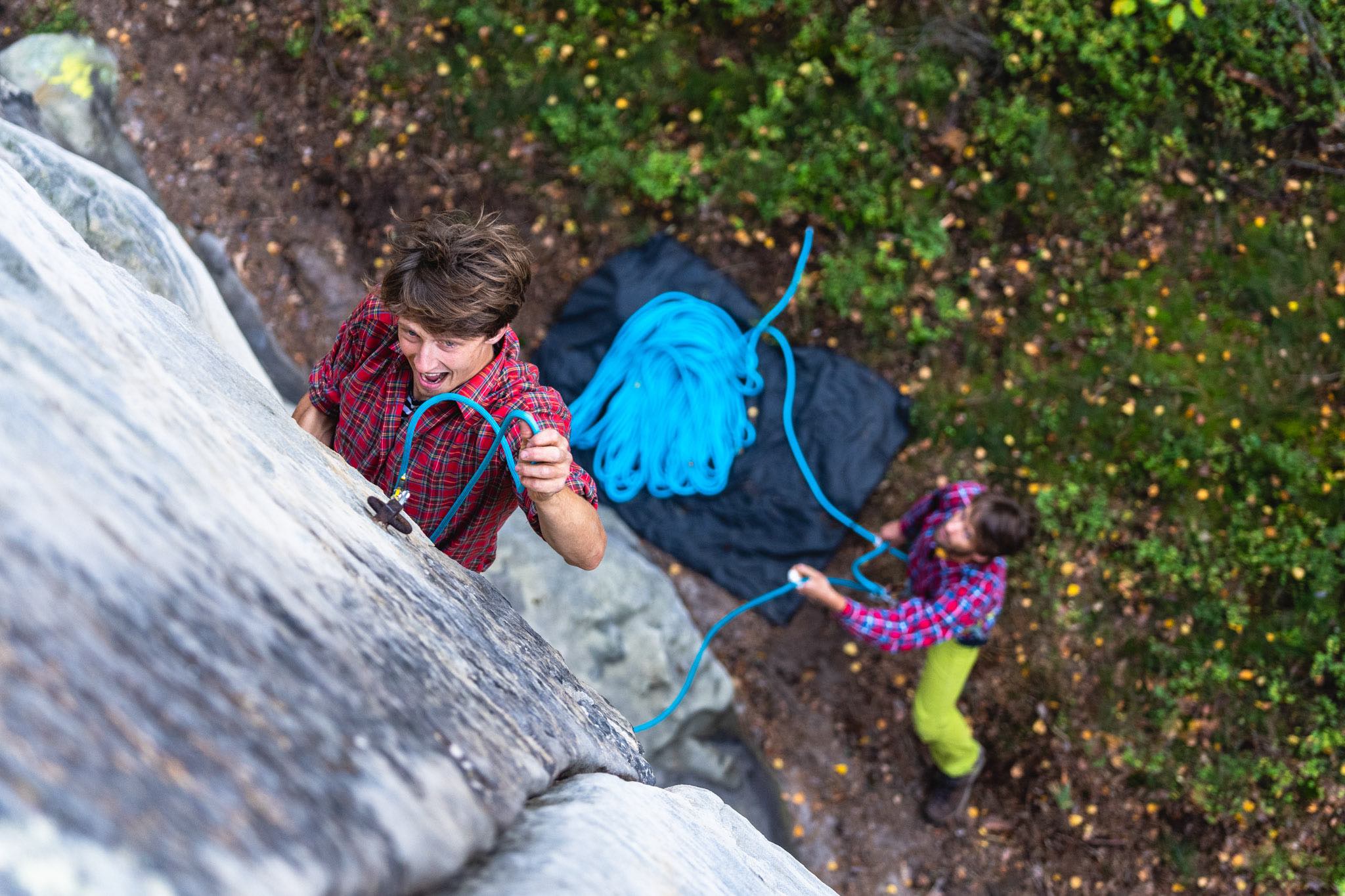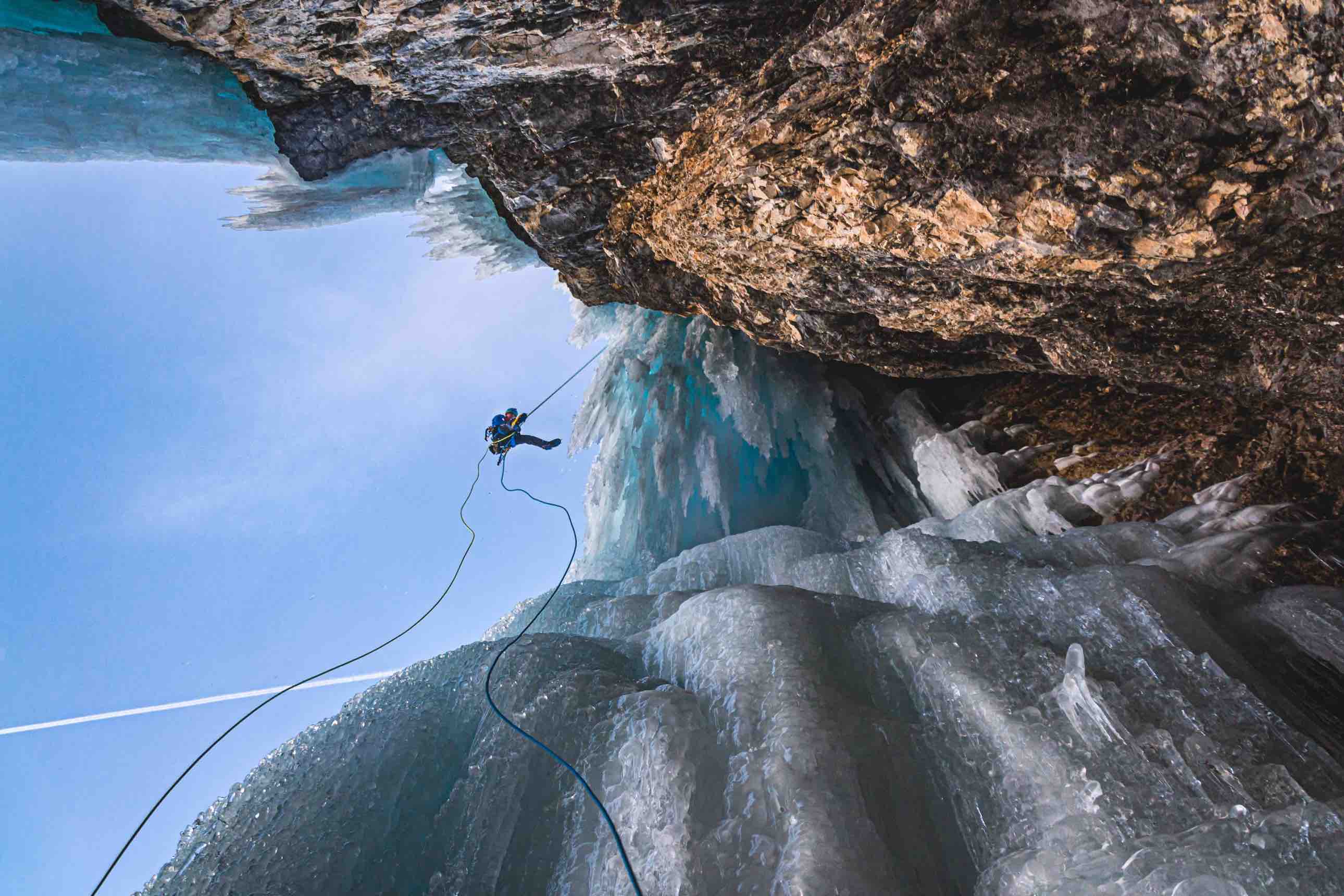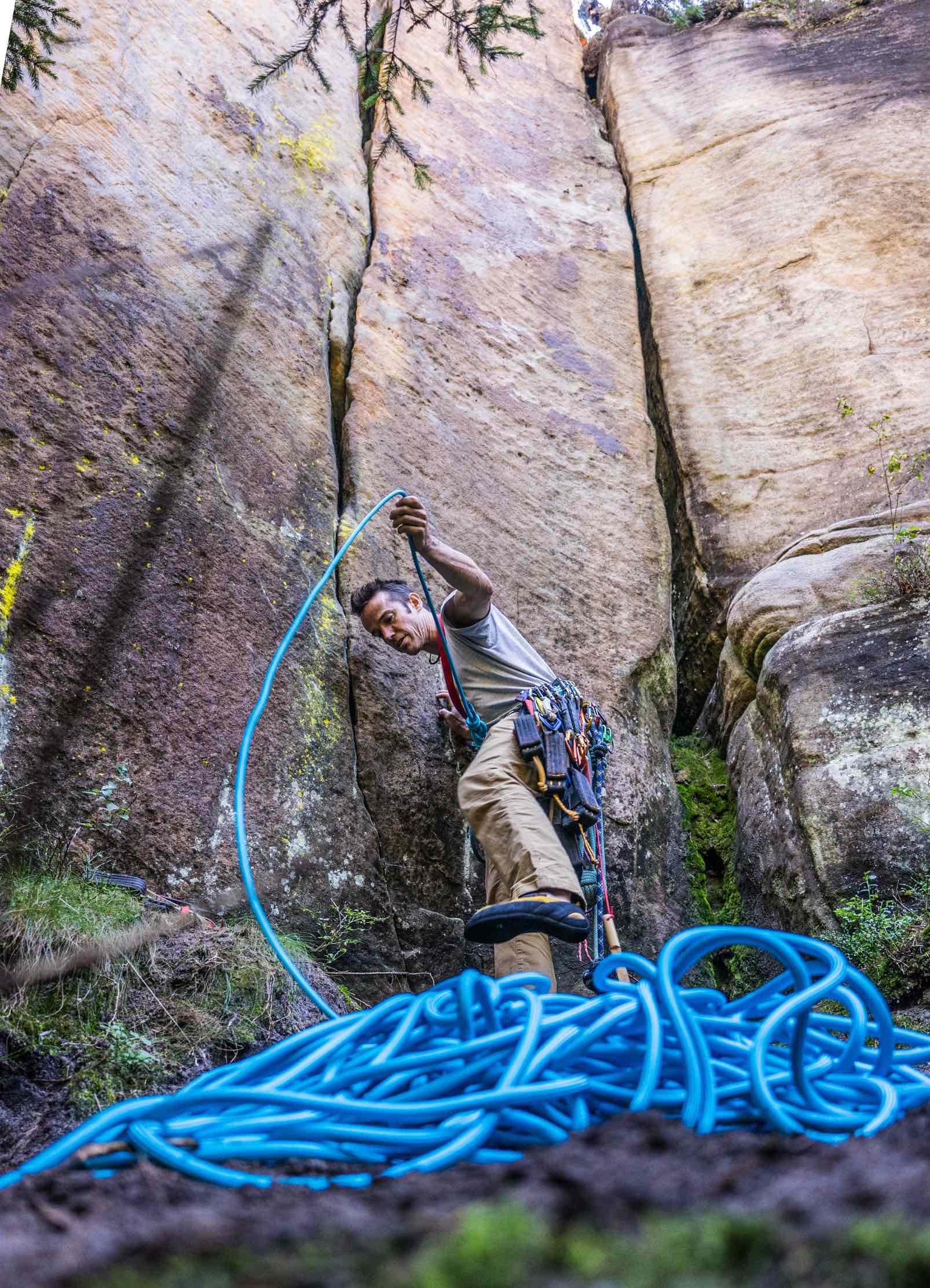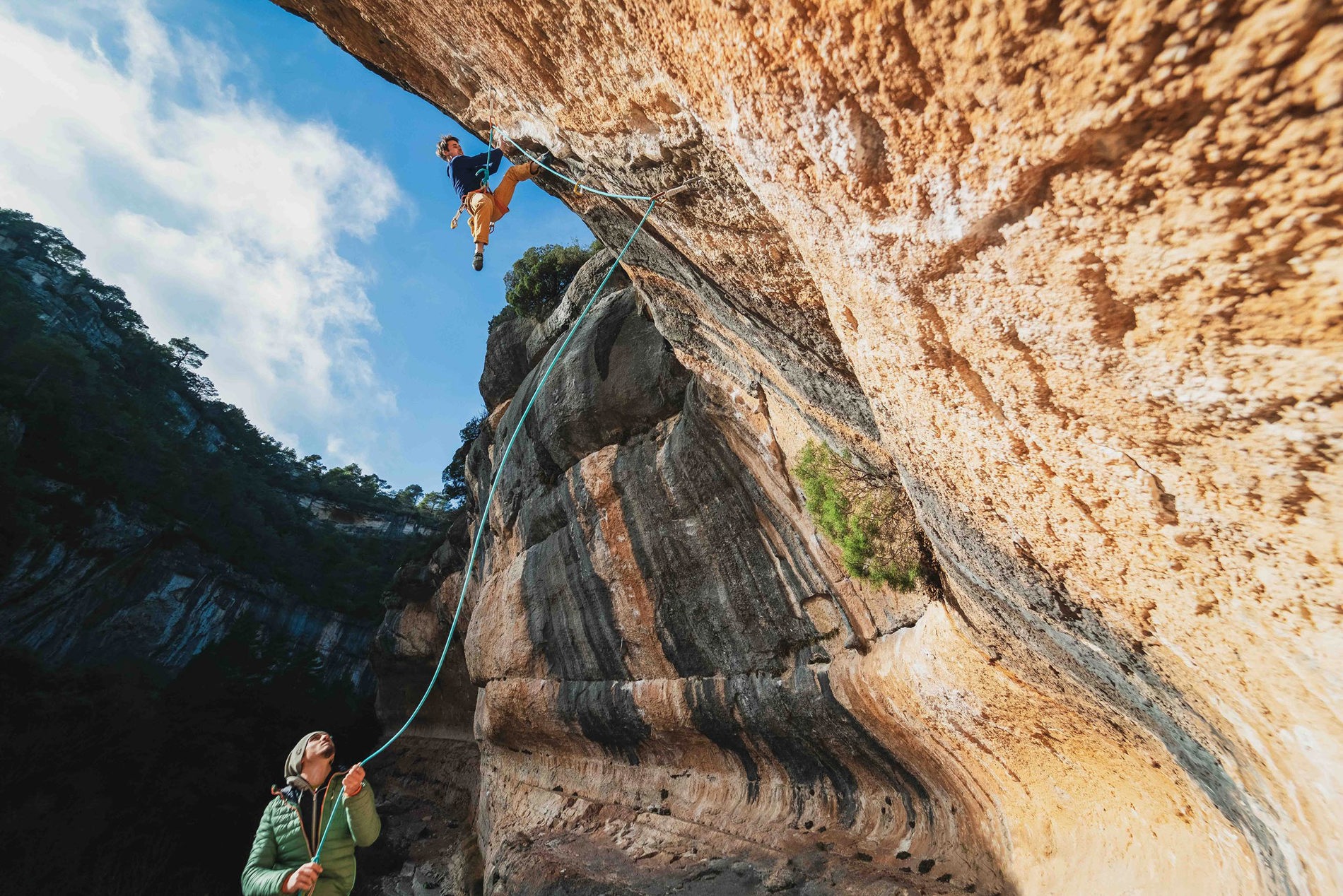- Home
- Blog
- Choosing the Right Rope for your Climbing Adventures
Choosing the Right Rope for your Climbing Adventures
How to choose the perfect rope to suit your climbing adventures! 4min read
Sophie | September 05 2024 Choosing the Right Rope for Your Climbing Adventure: A Guide to Single, Half, Twin, and Triple-Rated Ropes
Whether you're just starting out or you're a seasoned climber, selecting the right climbing rope is critical for both performance and safety. With so many options available, from single to triple-rated ropes, it can be overwhelming to know where to start.
In this guide, we’ll walk you through the different types of ropes—single, half, twin, and triple-rated ropes—and provide key insights on what to look for when choosing the right rope for your climbing adventures.
Types of Climbing Ropes: Single, Half, Twin, and Triple-Rated Ropes
Single ropes are the most common type of climbing rope; ideal for sport climbing, trad climbing, and indoor gym climbing. They're designed to be used on their own, meaning you don't need to pair them with another rope. If you’re primarily doing single-pitch routes or straightforward (in line) trad climbing, a single rope is your go-to choice.
Advantages:
- Simplicity: Easy to manage and less complicated to handle.
- Versatility: Great for most climbing styles, from cragging to multi-pitch.
- Convenient for top-roping: Single ropes are ideal for top-rope setups.
Considerations:
- Heavier: Single ropes tend to be heavier than other systems, especially at wider diameters.
- Limited in technical terrains: Not ideal for complex routes where rope drag or long abseils can become an issue.

Half ropes (also known as double ropes) are commonly used in trad climbing, ice climbing, and multi-pitch climbing. You’ll need two half ropes that are clipped alternately into protection, reducing rope drag and allowing for longer abseils.
Advantages:
- Reduced rope drag: Perfect for wandering routes with lots of gear placements.
- Longer abseils: Can be tied together so you can abseil nearly the full length of the rope.
- Safety: Adds redundancy—if one rope gets damaged, the other can hold a fall.
Considerations:
- Complexity: Handling two ropes simultaneously requires more rope management.
- Weight: Two half ropes may feel bulkier than a single rope system.

Twin ropes are similar to half ropes but are always clipped into the same piece of protection, meaning they act as a single unit in case of a fall. They're lightweight and typically thinner, making them perfect for high-alpine climbs and ice climbing where you want to reduce weight but still need the safety of two ropes.
Advantages:
- Lightweight: Generally thinner than half ropes, making them easier to carry.
- Ideal for ice climbing or long sport climbs: Their lightness and ability to offer longer abseils make them well-suited for icy environments or long sport climbing pitches
Considerations:
- Less versatile: Cannot be used separately for leading; you must clip both ropes into every piece of protection.
- More friction: Thinner diameter ropes require more careful handling, especially with your belay device.
If you want one rope to cover all your climbing needs, a triple-rated rope is your best bet. These ropes are designed to work as a single rope, half rope, and twin rope, giving you unmatched versatility. Whether you're sport climbing, trad climbing, or ice climbing, a triple-rated rope can handle it all.
Advantages:
- Ultimate versatility: One rope for all types of climbing.
- Simplified gear selection: You only need one rope for all your adventures.
Considerations:
- Expensive: Triple-rated ropes tend to be more costly.
- Durability: Triple rated ropes can sometimes have thinner sheaths compared to single ropes, giving them less durability.
Diameter: Balancing Durability and Weight
Rope diameter plays a key role in determining both durability and weight, two essential factors for climbers to consider when choosing a rope.
Wider Ropes (> 9.5mm): These ropes are typically more durable and provide better abrasion resistance. They’re ideal for beginners or for routes where frequent falls are expected (e.g., projecting sport routes). The extra material in the rope helps it withstand repeated use, but it comes with the trade-off of being heavier and often less flexible.
Narrower Ropes (< 9.4mm): Narrow ropes are lightweight and easy to manage, making them a favourite for alpine climbs, long multi-pitch routes, or when you’re looking to shave every gram from your pack. However, they tend to wear out faster than their wider counterparts and require more attentive rope handling.
Finding the right balance depends on the type of climbing you plan to do most. For daily cragging or gym use, opt for a thicker rope. For long approaches, alpine adventures, or when weight saving is critical, go for a thinner, lighter rope.

Complete Shield Treatment: Durability and Longevity
Climbing ropes are often subjected to harsh environmental conditions, from water to dirt and rock abrasion. This is where treatments like Tendon’s Complete Shield (or other brands’ equivalent) come into play. A rope treated with Complete Shield offers several advantages:
Water Repellency: This treatment keeps the rope dry, making it essential for ice climbing, mountaineering, or any environment where moisture is a concern. Wet ropes are heavier and lose elasticity, which can be dangerous in a fall.
Dirt and Abrasion Protection: Complete Shield treatment prevents dirt from creeping into the rope’s fibres. Dirt can increase friction between the fibres and cause faster wear over time. A treated rope stays cleaner and maintains its handling characteristics for longer.
Extended Lifespan: By reducing the amount of dirt and moisture that penetrates the core, the rope lasts longer, saving you money in the long run.
While treated ropes are more expensive, they’re well worth the investment if you frequently climb in wet, dirty, or abrasive environments. They not only improve performance but also increase the lifespan of your rope.
Final Thoughts: What’s Best for You?
Choosing the right climbing rope is all about understanding your specific needs. Are you primarily sport climbing or trad climbing? Do you prefer long multi-pitch routes or alpine climbs? How important is weight versus durability?
For gym or sport climbers, a single rope with a diameter between 9.2mm - 10.2mm and Complete Shield treatment is ideal. It offers the durability you need for frequent falls and rough handling.
For trad and ice climbers, half or twin ropes with a thinner diameter (7.6mm - 8.5mm) are ideal for reducing weight while providing extra safety on wandering routes. Complete Shield treatment can extend the life of these ropes in challenging environments.
If versatility is key, a triple-rated rope offers all-in-one functionality for those who dabble in everything from sport to alpine to trad climbing.
Take a moment to evaluate your climbing style, preferred environment, and future goals, and invest in a rope that complements your adventures.




